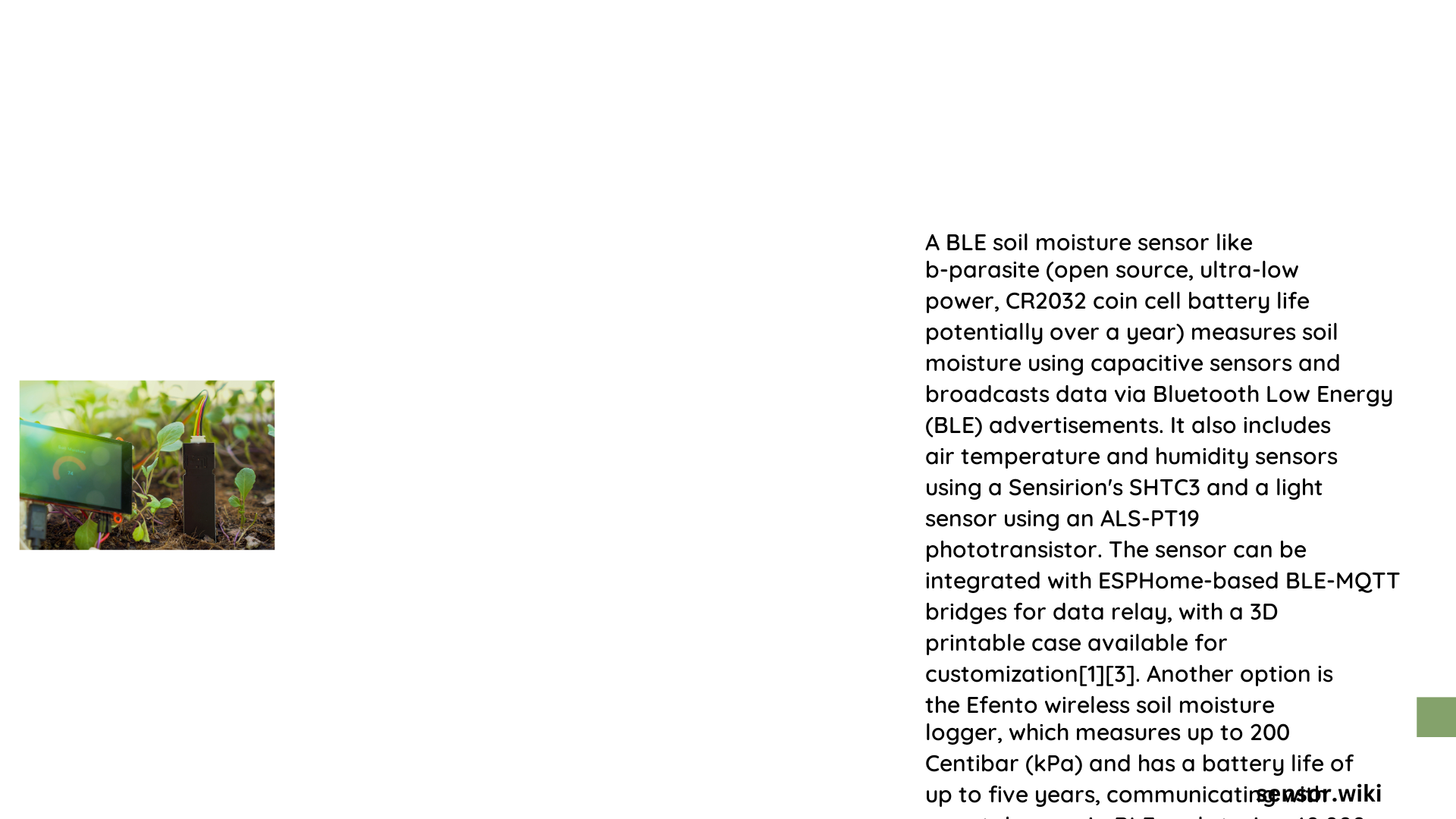Soil moisture sensor BLE represents a revolutionary technology transforming agricultural and environmental monitoring through wireless, low-energy connectivity. These advanced sensors provide real-time soil condition tracking, enabling precise irrigation management, crop health optimization, and comprehensive environmental data collection across diverse landscapes and agricultural settings.
What Makes Soil Moisture Sensor BLE Unique?
How Does BLE Technology Enhance Soil Monitoring?
Bluetooth Low Energy (BLE) technology in soil moisture sensors offers unprecedented advantages:
- Long-Range Connectivity: Up to 100 meters transmission range
- Low Power Consumption: Extended battery life spanning months to years
- Wireless Data Transfer: Seamless smartphone and IoT platform integration
- Real-Time Monitoring: Periodic data transmission with configurable intervals
What Are the Technical Specifications?
| Parameter | Specification |
|---|---|
| Moisture Range | 0 – 200 Centibar (kPa) |
| Temperature Accuracy | ±0.5°C (-10°C to +85°C) |
| Transmission Method | Bluetooth Low Energy (BLE) |
| Battery Lifespan | 1-5 years |
What Factors Impact Sensor Performance?
Several critical factors influence soil moisture sensor BLE performance:
- Soil Composition
- Different soil types affect electrical conductivity
- Impacts sensor reading accuracy
-
Requires calibration for precise measurements
-
Environmental Conditions
- Temperature variations
- Humidity levels
- Potential electromagnetic interference
Where Can Soil Moisture Sensor BLE Be Applied?
Agriculture
- Precision irrigation management
- Crop health monitoring
- Water resource optimization
- Yield prediction and improvement
Landscaping
- Garden and lawn maintenance
- Automated irrigation systems
- Plant health tracking
- Water conservation strategies
Environmental Research
- Ecosystem monitoring
- Climate change impact studies
- Soil degradation assessment
- Microclimate investigation
How Do Battery Performance and Power Management Work?
Power efficiency represents a crucial aspect of soil moisture sensor BLE technology:
- Average Current Consumption: Approximately 10mA during active periods
- Sleep Mode Consumption: Less than 3µA
- Configurable Transmission Intervals: Typically 10-30 minutes
- Estimated Runtime: 488 days with optimal configuration
What Are the Compatibility and Integration Options?
Soil moisture sensor BLE offers extensive compatibility:
- Smartphone applications
- IoT platforms
- MQTT message integration
- Cloud data storage solutions
- Custom dashboard development
What Challenges Exist in Implementation?
- Initial calibration requirements
- Potential signal interference
- Sensor placement complexity
- Cost of comprehensive deployment
Future Development Perspectives
Emerging trends in soil moisture sensor BLE technology include:
- Enhanced machine learning algorithms
- Improved sensor miniaturization
- Advanced predictive analytics
- Integration with autonomous farming systems
Conclusion

Soil moisture sensor BLE technology represents a transformative approach to agricultural and environmental monitoring, offering unprecedented insights into soil conditions through innovative wireless sensing capabilities.
